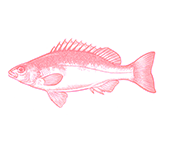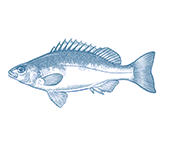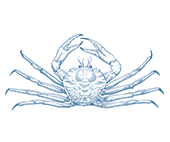




- Better Choice
Farmed
Region:
WA, SA
- Marron are a species of freshwater crayfish endemic to southwestern Australia,and are farmed in WA and SA.
- Farming operations are generally small scale; marron are farmed in ponds or farm irrigation dams.
- Most farms do not add additional food to ponds and dams; other operations add feed, although there is little reliance on marine resources (fishmeal).
- There is minimal effluent from farming operations, as water is used for other purposes, such as watering livestock and crops.
- Chemicals are not used in marron farming.



Marron are a very special crustacean, similar to yabbies or prawns. Their firm, sweet flesh is a real treat and cooking should be simple to allow it to be enjoyed at its best. Steam or poach whole marron until the shell goes a vivid orange colour (6-7 minutes depending on size), then pick the meat from the shell and enjoy it in a simple salad, or by themselves accompanied by good bread, butter, and a squeeze of lemon. Alternatively, marron can be split down the middle and barbecued or grilled like a lobster. Top with a little butter and remove from the heat when the meat starts to pull from the shell edges to ensure that they don’t overcook.
- Australian production (111t in 2020/21)
Marron are a species of freshwater crayfish endemic to southwestern WA, but have also been introduced to South Australia. They are primarily farmed in southwestern WA and on Kangaroo Island in SA.
Marron are farmed semi-intensively (with active feeding and management) by several targeted producers and extensively by nearly 200 extensive operators, who farm them without significant feed inputs in agricultural dams.
Marron farm wastewater is typically recycled or used in other agricultural production, and there is effectively little/no effluent produced. No chemicals are used in production, and because marron are extremely sensitive to agricultural chemicals, marron farming requires careful/minimal use of these chemicals in adjacent agricultural operations.Ponds used for marron farming are also used by a range of bird, reptile (particularly turtles and tortoises), fish amphibian and mammal species; as habitat and water sources.
Semi-intensive marron farms use physical barriers including fencing and mesh screening of ponds to control wildlife impacts. There is no evidence of lethal controls being used to manage protected species.


